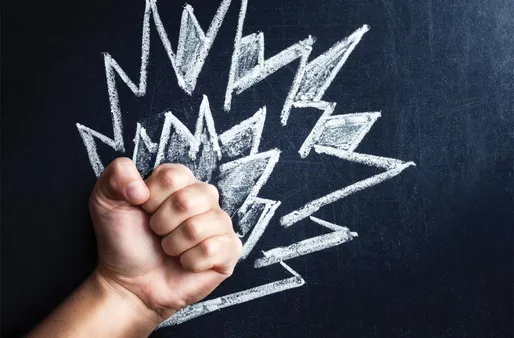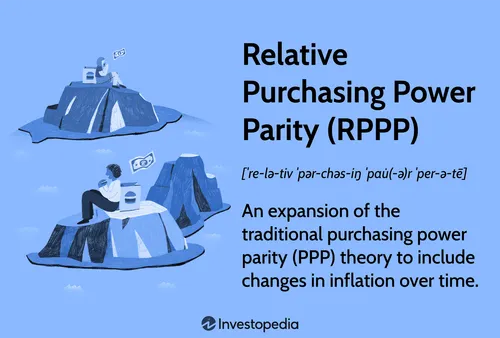Table of Contents
Welcome to Kizworld, your ultimate destination for exploring the dynamic world of** power** generation. As the global energy landscape undergoes a transformative shift towards sustainability, we delve into the fascinating realm of renewable energy technologies. From harnessing the sun's radiance to capturing the force of the wind, we uncover the innovative solutions that are revolutionizing the way we** power** our world.
Unleash the Power Within: A Guide to Harnessing Your True Potential
I. What Is the Meaning of Power?
The Definition of Power
Power, a concept that permeates every aspect of our lives, encompasses the ability to exert influence, command, or control over others or situations. It comes in various forms, ranging from physical might to intellectual authority, political clout, and economic prowess.
The term "power" is derived from the Latin word "potestas," signifying "ability" or "authority." Throughout history, philosophers, political scientists, and sociologists have extensively debated the nature and exercise of power. From Machiavelli's theories on political power to Foucault's analysis of power relations in society, the study of power remains a central theme in academic discourse.
The best gymnastics bars and beams
The Essence of Power
At its core, power is about the capacity to cause change or produce desired outcomes. By wielding power, individuals or entities can shape events, influence decisions, and manipulate circumstances to their advantage. Power dynamics are complex and fluid, as they are constantly negotiated and renegotiated within social and political structures.
A key aspect of power is its relational nature. It exists in relationships between individuals, groups, or institutions, where one party has the ability to influence or control the actions of the other. Power is not a static entity; it is constantly shifting and contested, with different actors vying for dominance or seeking to resist the influence of others.
Type of Power | Definition |
Political Power | The ability to make and enforce laws, policies, and regulations |
Economic Power | The ability to influence or control economic resources and activities |
Military Power | The ability to use force or the threat of force to achieve political or strategic objectives |
Essential gymnastics equipment and gear for pros!
Forms of Power
Power manifests in a myriad of forms, each with its unique characteristics and implications. Some common forms of power include:
- Political power: The ability to make and enforce laws, policies, and regulations.
- Economic power: The ability to influence or control economic resources and activities.
- Military power: The ability to use force or the threat of force to achieve political or strategic objectives.
- Social power: The ability to influence the behavior or opinions of others through social norms, values, and expectations.
- Cultural power: The ability to shape cultural values, symbols, and meanings to influence the way people think and act.
The exercise of power can have significant consequences for individuals, societies, and the world at large.
Getting started with gymnastics as an adult: A step-by-step guide
II. Examples of Power
Examples of Power
Power is a fundamental concept that manifests itself in various forms across the universe. From the colossal forces that shape galaxies to the intricate workings of living organisms, power is an ever-present phenomenon. Here are a few examples that illustrate the diverse manifestations of power:
The Sun's Energy
The sun, the center of our solar system, radiates immense power in the form of light and heat. This energy sustains life on Earth, drives weather patterns, and influences the planet's climate. Without the sun's power, life as we know it would not exist.
Hydropower
The movement of water possesses tremendous power. Hydropower plants harness this energy by capturing the flow of rivers or tides and converting it into electricity. This renewable energy source provides a clean and sustainable alternative to fossil fuels.
Geothermal Energy
Beneath the Earth's surface lies a vast reservoir of heat energy. Geothermal power plants tap into this heat by drilling deep into the Earth and extracting steam or hot water. This steam drives turbines that generate electricity.
Nuclear Energy
Nuclear power plants utilize the energy released from nuclear reactions to generate electricity. This process involves splitting atoms, releasing a tremendous amount of energy. Nuclear power is a controversial yet significant source of energy, as it raises concerns about safety and waste disposal.
Tidal Power
The rhythmic rise and fall of tides can be harnessed to generate electricity. Tidal power plants use turbines to capture the energy of moving water, converting it into electricity. This renewable energy source is gaining attention as a potential contributor to the global energy mix.
Fusion Energy
Fusion energy, the process that powers the sun and stars, holds the promise of a virtually limitless and clean energy source. Scientists are working to harness this energy by fusing atoms together, releasing enormous amounts of energy. While fusion energy is still in its experimental stages, it represents a potential game-changer in the quest for sustainable power.
III. How to Achieve Power
How to Achieve Power
Harnessing the Power of Renewable Energy
The pursuit of sustainable and renewable energy sources has become a global imperative. From harnessing the sun's rays to capturing the force of the wind, innovative technologies are revolutionizing the way we generate power. Solar and wind energy, in particular, offer immense potential for meeting our growing energy demands while reducing our reliance on fossil fuels. Dive into the world of renewable energy and discover how these technologies are transforming our relationship with power.
- Solar Energy: Harnessing the sun's energy through photovoltaic (PV) panels, solar power systems convert sunlight directly into electricity.
- Wind Energy: Wind turbines capture the kinetic energy of moving air, converting it into mechanical energy that is then used to generate electricity.
How to Do a Handstand: A Step-by-Step Guide for Beginners
Unleashing the Potential of Hydropower
The power of flowing water has been harnessed for centuries, and hydropower remains a significant source of renewable energy. Hydroelectric dams and turbines convert the energy of moving water into electricity, providing a clean and reliable source of power. Explore the inner workings of hydropower and discover how this technology harnesses the natural force of water.
Advantages | Disadvantages |
Renewable and sustainable energy source | Can disrupt natural ecosystems |
Reliable and predictable power generation | High initial construction costs |
Minimal operating and maintenance costs | Can impact water quality |
The Benefits of Gymnastics for Kids: Building Strength, Flexibility, and Confidence
Tapping into Geothermal Energy's Heat
Beneath the Earth's surface lies a vast reservoir of heat energy, waiting to be harnessed. Geothermal power plants extract this heat from deep underground and use it to generate electricity. Discover the science behind geothermal energy and explore the potential of this sustainable source of power.
- Dry Steam Power Plants: These plants use high-pressure steam from geothermal reservoirs to drive turbines and generate electricity.
- Flash Steam Power Plants: These plants use hot water from geothermal reservoirs to create steam, which is then used to drive turbines and generate electricity.
- Binary Cycle Power Plants: These plants use a secondary fluid, such as isobutane, to transfer heat from geothermal reservoirs to a turbine, generating electricity.
The Best Gymnastics Equipment for Home Use: Creating a Safe and Fun Training Space
Exploring Nuclear Energy: A Controversial Yet Significant Power Source
Nuclear energy has long been a subject of debate, with its potential for clean and efficient power generation often overshadowed by concerns about safety and waste disposal. Delve into the science of nuclear energy, examining the processes of nuclear fission and fusion, and explore the challenges and opportunities associated with this controversial power source.
How to Improve Your Flexibility and Mobility with Gymnastics: Exercises and Techniques
Investing in Tidal Power Plants for Renewable Energy
The rhythmic rise and fall of the tides offer a unique opportunity for generating renewable energy. Tidal power plants harness the energy of moving water during high and low tides, converting it into electricity. Explore the mechanics of tidal power generation and discover the potential of this emerging technology.
Type | Description |
Tidal Barrage: | A dam-like structure built across an estuary, allowing water to flow in and out through turbines, generating electricity. |
Tidal Stream Generator: | Underwater turbines placed in areas with strong tidal currents, generating electricity as the water flows through them. |
Dynamic Tidal Power: | A system that uses the rising and falling tides to lift and lower a floating platform, generating electricity as it moves. |
The History and Evolution of Gymnastics: From Ancient Greece to Modern Competitions
Envisioning the Future of Power Generation: Fusion Energy and Beyond
The quest for limitless, clean energy has led scientists to explore the potential of fusion energy, a process that mimics the power of the sun. Delve into the complexities of fusion technology, examining the challenges and advancements in this promising field. Additionally, discover other emerging technologies, such as hydrogen fuel cells and energy storage systems, that hold the potential to revolutionize the way we generate and use power.
- Fusion Energy: A process that combines atomic nuclei to release vast amounts of energy, with the potential to provide a virtually limitless source of clean power.
- Hydrogen Fuel Cells: Devices that generate electricity through a chemical reaction between hydrogen and oxygen, producing only water as a byproduct.
- Energy Storage Systems: Technologies that store energy from renewable sources, such as batteries and pumped hydro storage, allowing for a more reliable and flexible energy grid.
How to Choose the Right Gymnastics Leotard: Fit, Comfort, and Style
IV. The Consequences of Power
Power is a double-edged sword that can be wielded for good or for ill. When used responsibly, power can be a force for progress and positive change. It can be used to create opportunities, improve lives, and make the world a better place.
On the other hand, when power is abused or misused, it can have devastating consequences. It can lead to oppression, inequality, and suffering. It can be used to silence dissent, suppress freedom, and control people against their will.
Positive Consequences | Negative Consequences |
|
|
The consequences of power are complex and far-reaching, and they can have a profound impact on individuals, communities, and nations. For this reason, it is important to use power wisely and responsibly. We must always strive to use our power for good, and to avoid using it for personal gain or to harm others.
Power and Corruption
One of the most common consequences of power is corruption. When people have power, they are often tempted to use it for their own personal benefit, rather than for the benefit of others. This can lead to corruption, which is the abuse of power for personal gain.
Corruption can take many forms, such as bribery, extortion, nepotism, and cronyism. It can also lead to a lack of accountability and transparency, which can make it difficult to address and prevent corruption.
Click here for more information about how to use your power for good.
Power and Inequality
Another common consequence of power is inequality. When some people have more power than others, they can use it to create and maintain inequalities. This can lead to a gap between the rich and the poor, the powerful and the powerless.
Inequality can have a number of negative consequences, such as social unrest, crime, and violence. It can also make it difficult for people to reach their full potential, regardless of their background or circumstances.
- The World Inequality Database shows that the top 1% of the world's population owns more wealth than the bottom 99% combined.
- The United Nations Development Program estimates that more than 800 million people worldwide live in extreme poverty, on less than $1.90 per day.
- The World Bank estimates that more than 2 billion people worldwide do not have access to safe drinking water.
These are just a few examples of the many consequences of power. It is a complex and multifaceted issue that has a profound impact on our world. By understanding the consequences of power, we can use it more wisely and responsibly.
V. Conclusion
As we stand at the precipice of a clean energy future, renewable power sources offer a beacon of hope for a sustainable world. From the radiant embrace of solar energy to the untamed force of wind and water, these technologies are transforming the way we generate electricity. While challenges remain, the potential of renewable energy is undeniable. With continued innovation, collaboration, and a commitment to a greener planet, we can harness the power of nature to meet the energy demands of tomorrow and beyond.